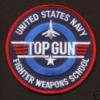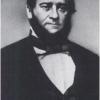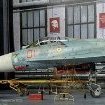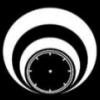Leaderboard
Popular Content
Showing content with the highest reputation on 20/05/18 in all areas
-
Hello Britmodellers, my first post here and I would like present my latest build Mig 21-Bis JRV i PVO reg. no. 17157 . Eduard Profipack MiG-21 Bis, Balkan models decals, Master model pitot tube. Painted with Gunze and Tamiya acrylics. For metal parts Gunze metallics were used. I hope you like the result.21 points
-
Hello, This is my latest model, finished just in time for IPMS Gloucester model show last weekend. The kit is Airfix's Lightning F.6. It was a pleasure to build despite injection issues (missing plastic) on a couple of parts. I improved it with Edouard photoetch for the cockpit and Master pitot tube Decals are mostly Airfix ones with some from Model Decals for the shark month and the unit markings. I must say that I get quite bored with all the stencils; I spend three long evening applying them all. But all in all it looks good in the end. Nevertheless, next model I'll choose to build will have a very limited number of decals... Hope you like it. Cheers, Antoine Last picture at IPMS Gloucester show:20 points
-
Howdy Everyone, Just finished my attempt at Special Hobbies 1/48 Spitfire Vc kit from the RAAF Service boxing Finished to represent a Vc flown by Sqn Ldr Eric Gibbs, No1 Fighter Wing, 54 Sqn, RAF, Winnellie, Northern Territory, Australia, 1943 Actually built 100% OOB for a change Although I nearly made the mistake of adding aerial wire to the mast...... ...luckily I found out they didn`t have them just in time. Probably the easiest SH kit I`ve built to date with only the wing roots needing some attention ( chop loads of material off the bottom of the fuselage side walls and sand the top of the u/c bays) The only other issue being which option to do 😊 Hope you enjoy, thanks for looking Cheers Russ19 points
-
Dear fellow Britmodellers, here's my 1/72 Academy Hawker Tempest, built from the box. I used Print Scale decals (72-273) to represent an aircraft of 3. Squadron, based at Newchurch, England, in summer 1944. I did not like Print Scale's RAF Roundel colors, so these were replaced by products from Xtradecals. More info and period photographs on squadrons based at the Newchurch Advanced Landing Ground here: http://newchurchvillage.org/history/newchurch-ww2/squadron-photo-gallery/ The model was painted with Gunze acrylics. All photographs by Wolfgang Rabel of IGM Cars & Bikes. The 'Chipping effect' on the D-Day stripes was done with Vaseline creme: According to original photographs, 3rd sqaudron aircraft had a halo effect around the fuselage code letters. This was probably the result of the ground crew, hastily painting the D-Day stripes around the letters. I tried to replicate this effect with masks from Tamiya tape. These were cut slightly larger then the corresponding letters. To avoid the Black/White stripes shining through the Roundel, I masked these areas too. Exhaust stains airbrushed using Gunze H95 Smoke with a drop of H12 Black added: Thank you for your interest. Best greetings from Vienna, Roman18 points
-
Boening 738 "Józef Piłsudski” Polish goverment. Zvezda 1:144, Decals Martola, windows Authentic Airliners.17 points
-
Some more USN from me. This is the old Hasegawa kit from a very ancient boxing which was very crisply moulded in hard dark blue plastic. A couple of minor improvements added were drilled out cannon barrels, some seat cushions from Milliput and some resin tip tank nav lights. I also thought that the main gear were of too narrow track (justified after a spot of measuring) and moved the location holes a couple of mm outboard on each wing which gave a much better look. Fit was pretty good but worth experimenting with the fit of the one piece lower wing and upper wings in order to avoid a potentially nasty step where the upper wing transitions to the upper wing stub attached to the fuselage half. The whole thing was sprayed with Gunze GSB from a rattle can to act as primer then given a coat of Xtracrylix GSB. The natural metal bits were from my dwindling stash of Citadel Chainmail and the red is Gunze Insignia Red. GSB finishes are quite difficult to weather convincingly and I experimented with using Flory light grey wash on this one. The idea was pinched after seeing how Navy Bird weathered a white TSR2 with a light grey wash and I thought it might work on a darker finish as well. The decals for this well photographed machine come from a combination of Microscale and Flevo decals sheets which both feature this aircraft but neither are wholly complete or correct and so had to be supplemented by other generic decals. Hope you like!! Pat16 points
-
Here is my latest completed model, the very nice Eduard Profipack Fokker Triplane. I started this build to mark the centenary of the death of von Richthofen on 21 April 1918. My usual slow pace of building means I an almost on month late. Brush painted with Citadel red - I think it is called something odd like Evilsunz scarlet or some such, over an undercoat of pink. Unfortunately I forgot to take any photos of it in its undercoat, more Pink Panther than Red Baron! Built OOTB using some of the PE provided with the kit, I did droop the elevator as most photos of DR1s show it drooping, also my first attempt at rigging, using thin fishing line. Not perfect but I am happy with the result: Andrew15 points
-
Good day, ladies and gentlemen! It's my next model.13 points
-
Here is my 737 I recently finished for the Boeing 737 Group Build. It was a great experience and I saw many excellent models being built, I only regret I couldn't find more time to comment on the other threads, I merely finished my build before the deadline! I saw the real plane in november 2010 at Victoria Falls airport, during a trip I made to South Africa and Zimbabwe. It was love at first sight and I just had to build it but, as you know, sometimes things don't go so smoothly and I managed to do it only eight years later. If you do a Google search you'll find that Z-WPA is still going strong, though in a much more plain livery: there are even a pair of trip reports on Youtube. I made a few changes to the basic kit: I used Authentic Airliners resin engines, the nose was cut and replaced with a resin copy of the DACO 737-400 one. The main wheel bay is scratchbuilt and surface detail rescribed on wings and tailplanes. Wing vortex generators and landing lights are from Authentic Airliners decals. Livery is from classicairlines.com. The build thread is here: Thanks for looking!13 points
-
Hi guys, here is my latest build, the Roden T 28 D Trojan. It was a good surprise, the kit is very easy to buiild and the scheme was really fun to paint. Cheers, Manu13 points
-
Hi Here are my last builds with these two Curtiss fighters from Special Hobby. First, this is the P-40N-5 s/n 42-105233 from the 89th Fighter Squadron / 80th Fighter Group in 1944 and based in Assam, East India. She was painted with Olive Drab and Neutral Grey from the Aqueous Gunze range. Decals came from the box. I added the resin wheels from CMK 72295 and the seat from 72294. Second is the Kittyhawk Mk. Ia AK772 of the No 112 Squadron RAF in spring 1942 somewhere in Libya. The paint came from Gunze for the Dark Earth and Middle Stone and from Xtracrylics for the Azure Blue. Inside the cockpit, I used CMK 72301 side panels and 72293 seat. Both builds will be published in Tamiya Model Magazine French Edition. Comment are welcome. Patrick12 points
-
Hi chaps Back after a while, it's always nice to post something finally done!! 1:48 Hasegawa Bf109G-2 Black four, Kroat JG52 from the eastern front 41-45 It's not straight out of box, it includes a resin cockpit and Aeromaster decals. I did some riveting too, which is quite easy on a 109. It was a fun and quite quick build, the plan is to make room for the other newer 109s from Eduard and Tamiya, Hasegawa being a bit obsolete... but still in my opinion it still is a nice little kit. Feel free to comment12 points
-
So finally after months of work, worry, mistakes and enjoyment the pair are finally reunited. Please remember this is a representation, my cupboard is only so big hence the short distance between tug and glider. Shooting photographs of the pair together proved difficult, so I've had to do my best. I present Stirling and Horsa. I will post some more pictures in the ready for inspection forum later, it's been a hell of a trip..thanks for joining me.👍12 points
-
Thanks Don - great idea! I had a look at my propelling pencils but neither were suitable - too big at the open end and I want that to 'centre' the part... No need to apologise Benedikt! I'm with you on the marks and admire those who can see a bump and say 'Ah, MkII'... Thanks Phil - now corrected! See below Thanks Rob I really appreciate you taking the time to explain, very kind of you and very helpful. I have a digital vernier and have used your advice (of course) - results below. Thanks Tony "There's no shortcut"? Rats. Better slow down then and concentrate... Great limerick, love it OK, here we go. Patience topped up, concentration ON. I have some plastic rod that's about the right size: If it were tube, I'd be laughing, but it's not. Here's the start of my 'centring guide', just waiting for a funnel to guide the point (any more ideas?) It does actually help me steady the bit without cutting my fingers, holding the rod and tube between the same fingers and 'feeling' the centre. I also used Rob's tip of darkening the end and pricking a punch mark before starting a test drill: Happy with that. How big a bit do I need (size is important, snurf snurf): Transfer that to the mitre block and chop a bit off. Test length: Looks OK? Three more, with a gratuitous tool shot: ... and some fuse wire CA'd in to help positioning and join strength: Happy. Of course I could have moulded four more from the long ones and cut them down but hey, I need the drilling practice. I'll glue those on, then on to page 2 of the instructions!12 points
-
11 points
-
Hi all Here is my take on the 1/48 Kinetic Harrier T.4 Finished it a few weeks ago but haven't got round to taking any pics until today. Its built straight out of the box with the exception of the scratch built intake blanks. and while the suns shining I took a pic of the T.4 with my other 48th Harriers. Enjoy Harrier T.4 XW927 by Scott Clayton, on Flickr Harrier T.4 XW927 by Scott Clayton, on Flickr Harrier T.4 XW927 by Scott Clayton, on Flickr Harrier T.4 XW927 by Scott Clayton, on Flickr Harrier T.4 XW927 by Scott Clayton, on Flickr Harrier T.4 XW927 by Scott Clayton, on Flickr Harrier T.4 XW927 by Scott Clayton, on Flickr Untitled by Scott Clayton, on Flickr Comments welcomed ScottC10 points
-
My latest finished project is the DC-10-30 in KLM colours. The kit, windows and windscreen decals are from Authentic Airliners. The decals are from the 26 and Revell (logo’s and registration). The kit is really great and I highly recommend it to anyone wanting to build a DC-10-30. I made a detailed comparison between the Revell, Authentic Airliners, Welsh (fuselage) and Contrails (engine) offerings, which you can find on the Dutch page here. The AA kit is the winner (clearly). Although the kit isn’t terribly difficult to build, I did have some problems with the primer. By trying out various primers, I eventually found one that didn’t result in “fish eyes”. Also, this has been my longest project so far (over 70 hours). This has mainly been due to the paint scheme (it’s a pain to get the metal colours right), but in the end I’m rather happy with the result. For the paints I used Revell 50 with a dash of white of the upper fuselage, Alcladd II ALC-111 Magnesium for the exhausts, ALC-119 Airframe aluminium for the engines, ALC-116 semi matt aluminium for the different colours with the engines and ALC-105 polished aluminium for the belly of the fuselage and the engines and leading edges of the engines as well. I also used ModelMasters Chrome Silver as a wash to smooth out the colour differences in the engines (so they become less stark). The Coroguard was painted with Vallejo Primer and the simply putting Alclad II Aqua Gloss on top of it (I found the colour to be just right). Model Masters Canadian Vodoo Gray was used to the lighter part of the Coroguard as well as the wing/body fairing, a part of the nose and the trailing edges of the wings and horizontal stabilizers. The decals from 26 (which actually come from their MD-11 sheet) are excellent as well. I would not recommend using the Coroguard decals from Nazca, as they are designed for the wrongly shaped Revell kit and do not fit on the AA kit! My next project will be the Czech Master Resin Douglas DC-2 orange KLM 1:144, which is part of Dutch a group build. Anyway, enough talk. I hope you enjoy the pictures, thanks for looking and see you next time! And finally, a picture with its sibling the MD-11 (also Authentic Airliners) that I build two years ago.9 points
-
Hiya Folks,.... the first coat of Dark Earth camouflage went on today!; DSCF3490 by Tony OToole, on Flickr DSCF3494 by Tony OToole, on Flickr Had a good afternoon & evening yesterday,.... but the old back has been suffering today! Our Son is at university in York and phoned up at lunchtime asking us to drive over,..... so bang went my afternoon of pre FA Cup TV coverage followed by the match itself! Anyway,...as he lives less than 5 miles from Elvington and as the Halifax was supposed to be parked outside the hangar this weekend,.... we took a slight detour on the way; DSCF3473_NEW by Tony OToole, on Flickr DSCF3471_NEW by Tony OToole, on Flickr DSCF3476_NEW by Tony OToole, on Flickr Shame the sun was right behind it,.... but brilliant to see it outside in its element,.....like thousands of other Halibag`s were around Yorkshire during WW2! Here are some of the other aircraft too; DSCF3478_NEW by Tony OToole, on Flickr DSCF3479 by Tony OToole, on Flickr DSCF3468 by Tony OToole, on Flickr Then we picked Rob up,.... who was suffering from a case of pre exam blues caused by days and days of revision,..... and took him for a run in the car over the beautiful North York Moors followed by fish and chips in Whitby,.... which seemed to do the trick! DSCF3488 by Tony OToole, on Flickr As I said,... lovely day,.... but feeling it now! Cheers Tony9 points
-
Here is my Airfix Victor B.2 that I finished over a year ago but never got round to posting When it came to which Victor to model there was only one choice for me and that's XL231. Been a member of the team who maintain XL231 at the Yorkshire Air Museum the choice was simple. I added Eduard's excellent pre painted etch to the cockpit and despite the fact that much of it can't be seen it did give the cockpit a very much real look to it. The model represents 231 as she was as a Blue Steel aircraft of the Wittering wing. Enjoy Victor B.2 XL231 by Scott Clayton, on Flickr Victor B.2 XL231 by Scott Clayton, on Flickr Victor B.2 XL231 by Scott Clayton, on Flickr Victor B.2 XL231 by Scott Clayton, on Flickr Victor B.2 XL231 by Scott Clayton, on Flickr And here she is with the real XL231 shortly after finishing the build 100_2627 by Scott Clayton, on Flickr ScottC8 points
-
Just watched an old B/W movie about the Dambuster Raid on TV. Yesterday at 6 PM she did the opening passes at the Shuttleworth evening Show at Old Warden. Always a fantastic sight!!!And the sound of those Merlins!!! My first time at Old Warden...what a great day!!!8 points
-
Ahh...with Paul Nicholas playing the hooker I see. I felt the judge was very fair in his summing-up all told. It must have been bloody filthy if you needed a cup of coffee after doing it. Sitting here typing this with an episode of Lovejoy playing on the other screen as a guilty pleasure - today we've been mainly making progress! This seems to be one of those elusive passages in a build when you feel that things are actually happening with visible results (rather than 'I sanded that for three hours and nothing to show for it in the photo...') Last knockings yesterday evening the the engines had a deeper black wash in a few places, which - with some of the umber from previously still showing - through, produced some nice variations at this scale. Here they are now now first thing this a.m. with front and rear sections joined together: I always struggle painting bits like this in terms of being able to hold and rotate them in a controlled manner. Here I found another use for old cotton buds cut in half - apart from paint stirrers: ...they made excellent mounts for painting the engines: After sealing with Klear these were then bunged post-haste into the cowlings: The undersides of the booms had received a dose of primer last evening, which in the cold light of the a.m. revealed a certain Vincent Price pallor to the proceedings. The Masque of the Grey Death : All those pencil marks indicate flaws, either due to the poor fit of the kit doors in the closed position or to clumsy bulges of filler that need reduction. 40 minutes of labour with file and buffing felt in the Dremel and all was shiny-cylindery again: On to more complex matters - beginning to fit out the interior! First job was to trim-off the excess Gorilla Glue. Not as simple as it sounds, trying to saw through that dried glue with the blade of the scalpel held fast against some rather powerful magnets! After that I discovered that there wasn't quite enough clearance between the rearmost magnets and the underside of the floor (this due to the reinforcing 'lip' of of plastic I'd added all around the inside of the join between the vacform and kit fuselage), though this was swiftly sorted by resort to a birr in the Dremel to grind out a channel: Then a test-fit of both halves. So that's where the razor blade disappeared to: Aren't magnets fun? I'd worked out a sequence for shutting all these parts up - based partly on the parts themselves and partly on structural and access issues like the metal reinforcements sticking out from under the spar box, the running order being: 1.Stick floor to port side of fuselage. 2.Stick ceiling to port side of fuselage. 3.Stick spar box/upper wing to port side of fuselage 4. Stick starboard side of fuselage to all of the above. Almost forgot that I still had oxygen cylinders in the 'painted' pile, so these were first added to the cockpit walls: Then, mixing up some epoxy it was down to the main event: This took about 40 minutes to get right (why is everything taking about 40 minutes at the moment?). Everything at the back worked fine: But a couple of issues announced themselves up in the cockpit. One was that with the tape tensioning the roof over the cockpit down, the head of the figure standing behind the pilots was too proud so I had to jiggle him to one side, in the process of which I managed to knock the radio op's chair awry. You can see these related issues in this shot: Predictable with all thsse potentially breakable bits scattered throughout the aircraft but nothing that can't be fixed with a bit of judicious gluing and tweezering... The canopy isn't stuck on at this stage btw, I'd simply taped it into place to make sure that the coaming around the top of the IP doesn't stick up too high and stop the transparencies fitting later on in that region: Prior to fixing all that, I'd remembered to add a shim rear edge of the side windows where my enthusiastic filing long ago had gone over the score: With all thatsettled and left to glue overnight, me ragged nerves required a chocolate biscuit and really strong cup of tea to recover... With the restorative Oolong thus swilling around the system, the engines were then installed: It's hard to tell prior to paint but I think the thinning and detailing on the flaps will be a significant improvement. This last picture is as an insurance policy. See that shiny-shiny on the wooden block in the centre of the frame? That's the remaining magnets. When I panic later gluing the starboard side on, remind me that's where I left them! Tony8 points
-
The Airfix kit of the MiG-23 built as a an early Soviet MiG-23M Flogger B in the overall grey scheme, These early aircraft quite often were armed with AA+2 Atoll as there were early problems with the new AA-7 Apex and Sa[fir radar. Build wise it's a simple kit with no problems, but I ended up on the touching up the paint merry go round for a while. Overall colour is Model Master 1730 grey. Decals are some RV MiG-23 decals from the spares file. Build Progress Photos MiG-23M-51 by Ryan Hothersall, on Flickr MiG-23M-52 by Ryan Hothersall, on Flickr MiG-23M-53 by Ryan Hothersall, on Flickr MiG-23M-54 by Ryan Hothersall, on Flickr MiG-23M-55 by Ryan Hothersall, on Flickr8 points
-
Catching brownies (larger than last time) again earlier this evening up on Dartmoor whilst the only sounds were sheep and cuckoos. Watching swallows skimming the water, a stonechat flitting by and a fox making an early evening foray not 30yds in front of me, and at times; total silence reigned.8 points
-
Eastern Express kit finished off with decals from Classic Airlines. I like a challenge and let's just say that this kit certainly ticked that box! I replaced the undercarriage doors with plastic card and I scratchbuilt the propellers and spinners. Decals performed flawlessly and kept me motivated to finish the build. Standard 4 x 4 walkaround pics : ...and the "with something else shot" - THY's retro Airbus that I finished off a few years ago : Hope it meets expectations. Comments and criticism welcome. mike7 points
-
Thanks for all the kind words guys. Rivets have continued in small amounts over the past few days but photos would be boring. I have found that two packs was not enough by a lloonngg shot. So I cleared the BIG yellow of there remaining four packs. They will arrive in a day or two. 😃 nothing done over the weekend as the boy has had his first fencing comp. he was seeded 42 of 60. Not bad for a first attempt. Believe me these kids were good! 🤺 Any hoo. I hope you all have had a great weekend. More progress next week, I promise. Johnny.7 points
-
Indeed, but I need the drilling practice and it is supposed to be OOB! Thanks Roger Thanks Giorgio We know Rob, we know... Thanks Håkan I've decided to leave the cannons and other sticky out bits off until just before I prime. These bits go together really well with some TET and a squish: Not so this bit: Needs some attention, sadly. All the other bits went on really well and look, wheels up option: Yay Airfix! I need to let those bits dry a bit before clean up, then it's on with the sticky out bits and primer!7 points
-
This is the very nice Tamiya kit used along side the Cutting Edge Crossdressing Stormbirds decal sheet. Yellow 17 was flown by Lt Hans Dorn of 1/JG7 and was captured at Fassberg by No 616 Squadron RAF in May 1945. I could find very little information on Dorn, I suspect he was a replacement pilot and fairly new to JG 7, seeing little or no action in his time there. As for yellow 17, she was designated AM-52 and ferried back to England for evaluation before being declared surplus and shipped off to Canada. From there, she was sold along with 300 other surplus aircraft and scrapped. As I said the Tamiya kit is a real pleasure to build. Painted with Gunze RLM 82/83/76 with weathering kept pretty light as this machine looked almost brand new when captured, in all likelihood it was.6 points
-
Thanks Chris, Adrian and Simon Thanks Keith - almost OOB then, you caught me! Thanks Bill Stretching sprue... still need to try that. Sticky out bits on: Unusual mounting for the pitot and aerial - just a 'circle' that goes into the holes on the wing. Good job I didn't leave a lug or they would have stuck out. Did I have fun getting the cannons aligned with the bulges and the wings? Of course, as always. I was just about to prime when I realised I haven't masked the canopies. Half asleep in this lovely weather. I need some masking mojo now...6 points
-
this is coming along swimmingly Tony. I have been particularly drawn in by the magnet episodes. You could say c'est magnetifique even. A quick heads up to you though... you should probably seek the services of an otolaryngologist at your earliest convenience. I don't think that stuff of that color should be coming out of your ears! I like how you've put caps on the ends to prevent pushing them in too far - good tip! .6 points
-
I only get up at 4am for really important things, such as having a long drive to a model show, (or if my bladder wakes me up).6 points
-
6 points
-
Posted Friday at 16:07 (edited) My model of a Christchurch double deck tram as built 1905. The trolley pole had been removed when this photo was taken. Usually the model appears after the original was built, but in this case the model came first! It was then used to persuade the unbelievers how the seating should be arranged on No 26 at Ferrymead. This is a good example of scratch building! The trolley standard is the barrel of a ball point pen, the netting around the top deck is a length of fly screen netting as used on a flyscreen door! and the windows are cut from a soft drink bottle with straight sides. Stairs were cut from a block of customwood with a fret saw. The pole (not shown) was made from a double-butted bike spoke and fitted with a trolley head and base. Wheels are the correct scale size. The truck side frames were made from two excellent patterns carved by Colin. These were embedded in plastersene and hardened in the freezer (don't tell mum!) over night. Next morning the patterns were removed from the moulds to be replaced with builders bog. The result is a set of 14D5 side frames to match the full size originals. Unfortunately the aprons are still missing their wooden tops. I think the driver has escaped to have a cuppa. The model runs very nicely and will tow a trailer.6 points
-
The weather has been far too nice for modelling but I did do a few dry-fit checks, just as morale boosters: wheels on: And basic engine/gearbox fit: And then finally the bodywork. So far it all seems to fit perfectly! Thanks for looking.6 points
-
So what have I been doing? I've started to work on the cockpit. The CA kit comes with a nice resin bomb sight head, unfortunately this isn't needed for the TT.18, so off to the spares box it goes! As you can see from the above photo I'm intending to replace the same part with part of the Airfix kit., this part needed modifying too so it would more closely represent the reale area in the nose. I also cut out the bomb aimers couch from the B(I)8 to add to the nose. I've done a bit of dry brushing on the cockpit I've now turned to the wheels, I've used the Airfix B.2 wheels as they are by far and away the best ones around, as they come but they could still be improved with a bit work. One of the things that needs doing is to open up the spokes. More soon! John6 points
-
I shall start off with this unusual aircraft that operated from Italy on anti shipping strikes. Unfortunately she wasn't very successful and incurred great losses before moving to Germany.5 points
-
Not sure of what this is or its origin but I picked the kit up from AliExpress for just over a tenner. It's a nice kit goes together very well. I added the barrier to the base and the brake cable and exhaust pipe, I have made a hash of the dials but I'm OK with that. The base will end up being used on my YT build that why the posters are from the book Snowcrash.5 points
-
Hello All, The Milicast kit is a rather nice resin kit with surprisingly few parts. The build thread is here. I took advantage of the sunshine to take some photos on my back doorstep: Thanks for looking, Adrian5 points
-
Hi folks, this is the brand new SBS Model kit I picked up at the Moson show and built it over past couple of weeks. It's resin kit with etched and white metal parts, all done to high quality we have come to expect from this company. It was pretty much straightforward affair except few joints here and there to be addressed with little putty, but nothing really excessive for a resin kit. I replaced the markings for O.Tuominen machine (1/LeLV46, autumn 1941) and followed the coloured profile and pictures from Finnish Fighter Colours book by MMP. Maybe not every scratch or paint touch-up is correct, but I'm quite happy with it. The paint chipping was done using "hair-spray" technique, using a medium-strong hair spray from my wife's stock. Cheers Libor5 points
-
I pushed them in too far - that is actually the colour of my mind hendie... 🕳️ Put your finger on it.. I am not in a position to give such an undertaking at this time. Never walk past an armoury after swallowing a large magnet I say...5 points
-
My head has been turned by other Group Builds but it's time to see if I can get this finished in the next six weeks. This is where it is now: Thanks for looking.5 points
-
5 points
-
Hmmm, things not going that smoothly... I've been learning how to Alclad; the pictures below are the second attempt with the Polished Aluminium. The first attempt I tried to have some different shades of undercoat (greys and blacks) but it looked a mess as the undercoat finish wasn't good enough. As you can see with attempt two I've gone for a gloss black finish and have tried to really polish it up. I've used varying grades of micromesh and then a polishing compound to get a "glassy" gloss black finish. The polished Al then went down quite well and looks ok. There's a few problems though. The white aluminium sprayed on previously has been messed up by the tape - I don't know if this is because I masked too soon after spraying the Al (about a day), if it has been on too long (around a week), or a combination of both. The second problem is that the pristine gloss finish didn't quite reach to the edge of the panels adjacent to the masked region, the masking stopped me polishing there, and this also shows through in the final finish. Anyway I'm not happy with it so probably going to get the black gloss out again and start from scratch... One thing that did go ok is the extra panel lines I scribed (not done this before) and overall I'm trying to be philosophical about it all. I'm starting to get the hang of nmf and learning lessons along the way (don't do things in a stupid order, wear gloves to avoid fingerprints(!), dust is the enemy, etc). Hopefully third time lucky! Any tips much appreciated!5 points
-
I did promise a small surprise for our Czech friends back at the Moson 2018 show. The latest Eduard MiG-21MF, the “Grey version” is out and it was about time that the Russian Air Superiority Grey colours was provided to the modellers. The Gorkiy produced MiG-21MF’s were delivered in this overall grey scheme not only to Russian AF but also to foreign buyers, including the 20 airframes to the Czechoslovak AF. The exact ID of the paint is AC-1115 in Russian manuals, in English it reads AS-1115. While in 1975-76 the very last pieces of the MiG-21MF were produced, in parallel to them the MiG-21bis was already in production as well as the early MiG-23 versions. They all received the same Grey colour. But we should not forget about another “big user” of this colour the MiG-25 family of aircraft. Based on current information the AS-1115 can be traced back to the Foxbat aircraft which needed a special heat resistant paint. It stayed with the MiG-25’s but with the advent of camouflage schemes in late 1970’s and early 1980’s this grey colour virtually disappeared from other fighter aircraft. Here is the latest paint from Mr. Paint the AS-1115. I have sent colour sample to the company, an original piece of metal with the right colours on it. Not a visual observation, not a comparison to colour charts, to other model paints or Federal Standard numbers, but the real aircraft part. OK, you can ask how authentic these colours are? I took several original aircraft parts and first of all compared them. What the parts were? First of all MiG-21 bis spare parts provided by the manufacturing factory for repair purpose. They were all painted in accordance with factory specifications, that is with the same colour as the actual aircraft produced, in this case the Gorkiy based aircraft manufacturing plant № 21. Theses actual parts were never used so they never faded, never been subjected to weathering, to sunlight. They were kept in the warehouse of the aircraft repair/overhaul factory. The part I sent was from the wing root cover panel but several other MiG-21bis parts were also compared in the past years. There is a minimal, fractional shade difference between some MiG-21bis parts but the colour is the same. This gives chance for play with slightly different shades of the same grey for the weathering fanatics. Although I have to add that our own MiG-21bis when they arrived from the factory were extremely uniform grey with not a sign of the slightest difference between panels. One should not make decisions based on a single source. So I had a look at MiG-23MF panels also. Once again factory fresh, no usage, no fading. They came from different production batches and different parts of the aircraft. The colour was identical to the one on MiG-21bis parts. For illustration please find attached the MiG-23MF parachute brake cover and the wing tip end plate together with the raw wing root covers of the MiG-21bis. How about the MiG-25? Well unfortunately I don’t have original pieces but have examined in the past decades about a dozen airframes. OK, but that could be subjective or the given aircraft extremely faded or extra dirty from use. In the operational manual of the MiG-25 it is stated clearly that the aircraft is painted overall in the AS-1115 grey colour with exception of few areas. Best regards Gabor5 points
-
One of the things that drew us to where we live in France, was the peace and quiet. When my brother-in-law visits, he stands outside and just laps it up, enjoying the "noise" of the silence. "Rush hour" in the morning is when the school bus comes through, and then again around 3pm on it's return. A traffic jam is when two tractors meet on the road going in opposite directions. It's not all peace and quiet though. When the ring neck doves start cooing outside my window at dawn, my patience does wear thin and I contemplate ringing the necks of the ring necked doves. John.5 points
-
thanks for stopping by folks :) ..no assembly news today, but I have spent days on recreating all the placards and stuff for the bespoke decal sheet for the model. I will tack it on to an airscale stock order so will end up with lots and lots of copies, but at least I only need one of everything on the sheet and will have lots of spares placards, labels, the front of a Bendix radio in this pic.. ..fuel routing diagram, fuel controls, part of the control panel,trim control wheel labels etc in this one... ..instruments, throttle quadrant and IP bits & bobs to finish off... ..good to get this done while I wait for the PE and still need to add some external markings (most will be masks...) and see what is what for any decals I need outside the cockpit... TTFN Peter5 points
-
Thank you @Gorby, and @clive_t for your responses. And thank you @Corsairfoxfouruncle, @Gorby, @GrantGoodale, @whitestar12chris, and @clive_t for your reactions. ______________________________________________________________ Was given an image of a larger plan view of the XXI. Discovered that something is stored under the torpedo room floor. The kit's cutaway section shows a partial view. Naturally the cutaway could be enlarged. Well that just invited me to add some spares to the model. Made a spare torpedo from the kit template frame. Quickly figured out what parts of the wall is visible after the torpedoes and tubes are installed. Used single strand wire to add extra electrical conduit within these visible areas. The spare torpedo is installed under the floor. Bottom photo show the extra conduit seen under the torpedoes.5 points
-
Envious,John,love the diplay cabinets,I have fence pailings for shelves in my garage,Chinese take-away,at least you can have the memories of what came in them,YUM YUM!!,Cheers.5 points
-
Sorry Franz,.... I`ve sneaked in a 1/72nd scale conversion of the Airfix Spitfire I into a Mk.V too,..... here is the 1/48th scale model so far; Fuselage and cockpit complete,.... the lower wing section has been cut down ready to fit the new resin upper wing part. As there was quite a lip towards the rear part, I added a small tab to the resin wing, made from scrap sprue; DSCF3464_NEW by Tony OToole, on Flickr The cut down lower wing centre section in place on the fuselage, showing the surplus outr wing sections and the replacement resin items; DSCF3462_NEW by Tony OToole, on Flickr And just to show the fit,.... here is one of the resin wing sections test fitted into place. One of the wings was quite warped towards the rear,.... but it was held under boiled kettle water and bent back to shape; DSCF3465_NEW by Tony OToole, on Flickr All the best, Tony5 points
-
Finding centres can be a right royal pain. One way is to use a black permanent marker to lightly paint the bit you want to drill (adds contrast), then use a pin in a pin vice as a teeny tiny centre punch to lightly mark centre. Having an actual point instead of the splayed drill tip makes it easier to find. Mark lightly, then use the old Mk.1 eyeball to see if the mark is centred. If not, recalculate where it needs to be and try again. Keep going until you get it, then make a deeper punch mark in the accurate light mark, and drill in that. I find that I usually get it after 2 or 3 tries- more than that, repaint with the marker and start again or it gets confuzzling. Honestly easier to do than it is to explain. And you won't say 'mark' as many times, either. As for the actual drilling- try your very hardest to start the hole vertically. I find that holding the piece in one hand and the pin vice in the other in one direction gives me accuracy, while swapping them around gives me speed. It may be the same for everyone, it may be because I'm a lefty and drills rotate the wrong way <shrug> Either way, start drilling with light pressure and use both sight and feel to align things, turning the piece as needed to check alignment at 90° planes. I find that a blank background works best for this, so that there's no extra lines in view to lead the old eyes astray. Start with a drill about half the finished hole diameter, then use one about 3/4, then full. You can skip the intermediate 3/4 size if you have lots of material around the edge, but removing small amounts saves stretching and tearing if you're close to an edge. Drill a little, then pull the bit out and clean the swarf away from the flutes. Put it back in, drill a little, pull it out etc. This prevents stretching the plastic and allows the drill to centre better. If you're drilling flat sheet, just make a hole large enough to get a tapered broach through, then use that for the whole hole -much more accurate, and you can cut extremely close to edges with a broach. Note that broaches don't do blind holes very well, unless you're lucky enough to be making a hole that matches the tip of a broach. Practice is key, this all takes time to learn the feel of it. Practice on sprue offcuts flatted across the end, stretched thinner if you so desire. A set of digital vernier calipers is a godsend for this kind of work, it allows easy sizing of rod and drills and is kinder on the eyes than the small numbers printed onto micro drill boxes- my digital set cost me about $30 15+ years ago from a chain auto supply shop, and they're accurate to .01mm. They also do Imperial for the times that it's needed. Good enough for what I need, even if they'd never survive a day in a production environment. At the very least, they're good for gross comparisons - measure a piece, lock the slide, then offer up other pieces to get a bigger/smaller indication. Something like these is all that's needed http://www.halfords.com/webapp/wcs/stores/servlet/ProductMobileDisplay?storeId=10001&productId=1031339&categoryId=318447&langId=-1&catalogId=10151 you'll no doubt find them even cheaper on eBay, and cheaper again if you go analogue scale, but then you'd also need new glasses to see the numbers and to learn how to interpret what you see (not difficult once you know how, but wrapping your head around the concept can be. Or maybe that was just me.) Digital is easier, trust me. I have both and use the analogue set for the gross work, the digital for when I really need the numbers. Right, after Tolstoy finished his epic, he... I dunno, went and had a beer. Probably. I'm going to have a late breakfast. Hopefully there's something of value in the above, even if it is only a recommendation to buy a new tool. Feel free to ask for clarifications etc, or indeed to just ignore the whole lot.5 points
This leaderboard is set to London/GMT+01:00






.thumb.jpg.d17ff607fc7e89ed057e63fcb6f2a888.jpg)

.thumb.jpg.f2698d4ca7fbebe0bd98aef273afd5e1.jpg)
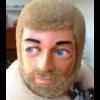
Wedge-TailedEaglePortraitRaptorDomains.thumb.jpg.41a306d3445a68f0f2df773e01776ea6.jpg)

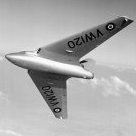

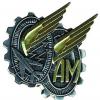
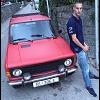


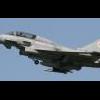
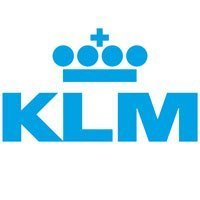
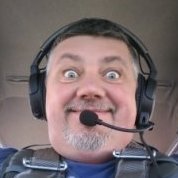

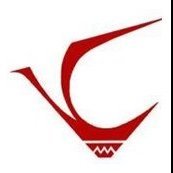



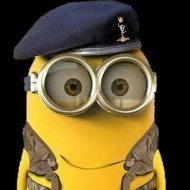
.thumb.jpg.cfc129272ffec824439b15e6013d5952.jpg)
.thumb.jpg.158e2e086d45b8f96b7d93b8bee8dc21.jpg)
